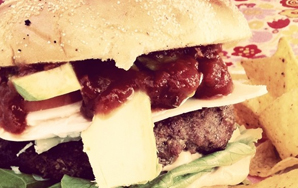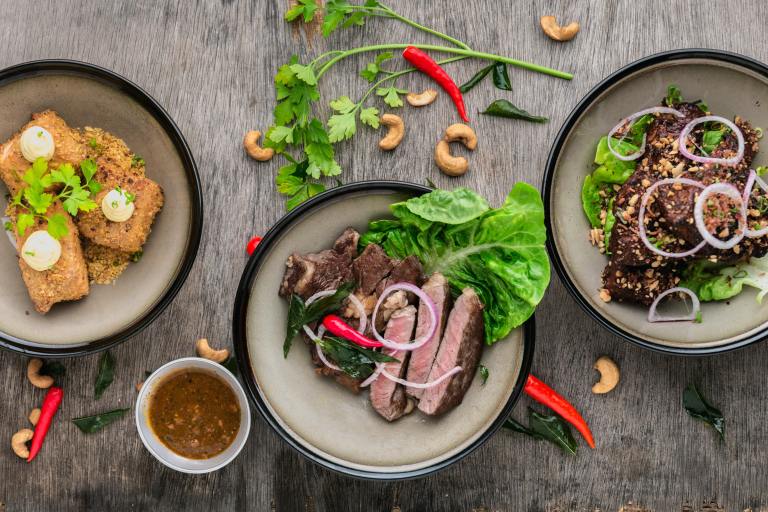The Awkward Elements Of Having A Livestrong Account
MyPlate, which allows you to track the calories and nutritional facts of your daily diet, has definitely helped me improve my eating habits. While I recommend it highly, being honest about my diet has been a bit awkward at times.
By Ted Pillow

I have never, ever been a healthy eater. My favorite foods include pizza, fried chicken, onion rings, Chipotle burritos, etc. My grocery store receipts tell a sordid tale: heaps of frozen dinners, sugary cereals, and strange concoctions from the Frito-Lay Corporation. Let’s just say I don’t know my way around the kitchen. Hell, I don’t even need a kitchen — the kind of food I eat comes ready-made… I just need a hot day to let it thaw on the dashboard of my Camry. Vegetables? Eh, maybe if they’re covered in butter and salt. Fruit? Preferably in flavored, gummy snack form, thanks.
Somehow, this didn’t start catching up with me until recently. Maybe my metabolism finally started to slow down, or maybe it’s that I just haven’t had the time to exercise post-college. In either event, I decided to create a profile on Livestrong.com (yes, like the yellow wristbands — it was partly created by the Lance Armstrong Foundation), a site best-known for its popular MyPlate feature, which boasts “the largest online food and fitness database.” Does that mean largest in the world? I guess so — it’s Lance f-ckin’ Armstrong. MyPlate, which allows you to track the calories and nutritional facts of your daily diet, has definitely helped me improve my eating habits. While I recommend it highly, being honest about my diet has been a bit awkward at times.
Reporting my excessive weekend drinking habits
On the 7th morning of the first week I used Livestrong — a head-pounding, dehydrated Sunday — I debated a question that would eventually determine my fidelity to the program: Just how honest was I going to be about my weekend binge drinking? Eventually, I decided that if I wanted an accurate picture of my diet, candor was the only option. But even once I made that commitment, my original dilemma splintered into a series of smaller questions: Did Livestrong list the nutrition facts of Colt 45 Malt Liquor? (It does. Phew.) Would Livestrong judge me if I entered 14 servings of Natural Light beer for a single Saturday night? Are the Jack and Cokes I make equivalent to the ones listed on the site, or should I clarify that mine are three servings Jack and one serving Coke?
Although it usually evokes some deserved shame and despair, I’m glad that I’ve chosen to be truthful with Livestrong about my drinking (well, when I can remember how much I drank, at least). I think I’m more conscious of my drinking; I’ve also realized that I should probably save the all-out binges for special occasions. In other words, if I’m spending Saturday night at a friend’s house watching Ghostbusters II, maybe I should pass on pre-gaming. After all, it’s slightly counterproductive yourself to hold yourself to 1,800 calories a day during the week and then drink 1,500 in a single night just because you heard “This is How We Do It” on the radio and got pumped.
Admitting shameful eating binges
Of course, even the healthiest eaters are going to splurge once in a while and enjoy a candy bar, McDonald’s fries, or anything on the Taco Bell menu featuring the words, “Supreme,” “Volcano,” or “Grande.” On the other hand, for someone trying to reform their diet, these lapses may occur more often than desired, and disclosing your binges to Livestrong can be like pouring salt on the wound. Perhaps that was a poor choice of metaphor. Excuse me while I get some pretzels. And maybe some peanuts; hold on.
Anyway, you might occasionally find yourself in situations where you’re faced with nothing but deliciously unhealthy eating options, like a Super Bowl party, a shopping mall food court, or the Midwest. Not long after I started using Livestrong, I attended a family party that featured fantastic catered food. The chef had clearly taken the time to create a cohesive, well-planned menu, which he then accidentally dropped into a deep fryer. Within the first hour I was at the party, I took about 5 bites, which amounted to, and I’m estimating here, 3000 calories. And that was just the hors d’oeuvres. Throughout the night, I kept guiltily whispering to people, “Hey… I won’t tell Livestrong if you won’t!” No one seemed to know what I was talking about, but as I continued to smile blankly at them while stuffing mozzarella sticks in my face, they usually just smiled and backed away. Eventually they told me to leave when they realized that I wasn’t technically a member of their particular family, but that’s beside the point.
Trying to calculate the nutritional facts of a home-cooked meal
Livestrong is most helpful when you’re getting lunch from a chain restaurant, or heating up some generic frozen food product. Just type the name into their search system and you’re immediately provided not only with a full set of nutritional facts, but how it impacts your recommended daily diet. It’s easy, it’s useful, and you know it’s an authentic representation of what you just ate.
However, trying to calculate the serving sizes, ingredients, and other idiosyncrasies of a home-cooked meal can be a daunting challenge. Especially if, like me, you rely on other people to make the majority of your meals for you (like some kind of idiotic, parasitic free-loader that can’t make toast without setting off a smoke alarm and spreading a new strain of mad cow disease to the entire Eastern seaboard).
Typical questions include: “How many servings of mashed potatoes was that?” “How many ounces of corn?” “What the hell was that in that omelet?” “Did I taste bacon bits in that stir fry, or was it just my imagination?” And, “If that dinner was only 81 calories, then why have I been digesting it for four days like a boa constrictor?” ![]()




